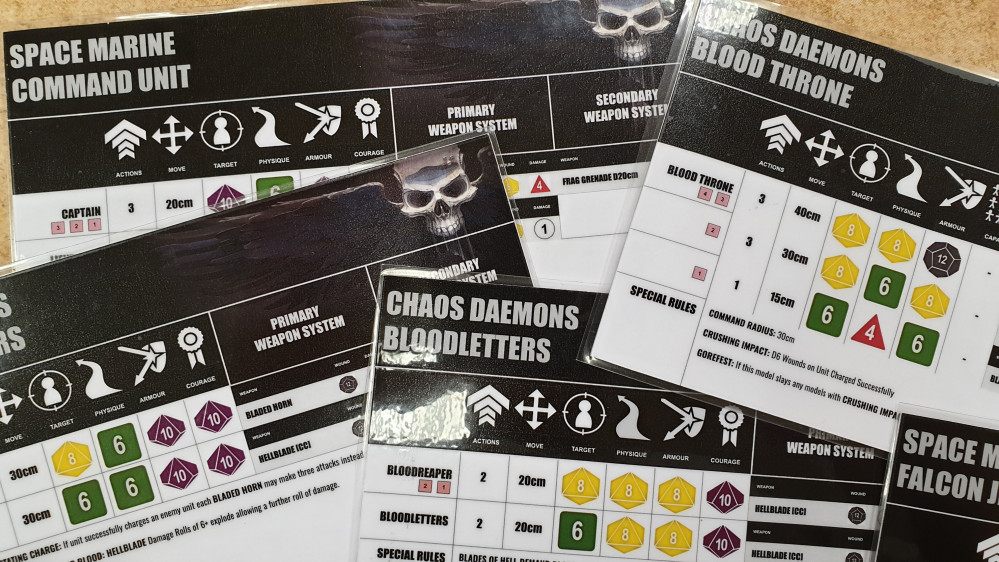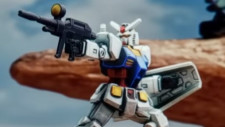
Warhammer 40K For Kids
Describing a Unit and Working Out Opposing Dice Roles
I set about thinking of how to describe a unit, its stats, its weapons and any special rules it might have.
Where possible I try to use words and phrases from the Official Warhammer 40K game to tie in with it and ‘keep the vibe’ – I’ll discover in a couple of years time if that helps them or confuses them!
Unit Console Cards
Above you will see a rough Unit Card that we will work from to see what each unit can do and what it’s stats are.
A unit is described by the following stats
Name (and Number of Lives): The name of the Model in the Unit and if it has more than one life it has little red squares that we tick off as it gets wounded.
Actions: The number of actions a model in a unit can take (The actions available to that unit are on the back of the card and anything faded out can’t be performed)
Move: The distance moved by a model in the unit. I have opted for metric as my children are or will be learning measurements in metric so I want to support that learning rather than confuse things by introducing the sacred imperial system we wargamers love so much lol I have also opted to increase the amount of movement units can take to speed up the game and give the children more chance to reach parts of the table and sweep around and change their minds. This should unlock a lot more story telling potential.
Target: The poly dice to roll to try and score a hit against another unit.
Physique: The poly dice to roll to see if you manage to avoid being targeted (and used for a couple of other tests)
Armour: The poly dice to roll to see if your armour deflects a wound roll from a weapon.
Courage: The poly Dice to roll when something related to your courage is tested.
Weapons
Currently each model has a primary and secondary weapons slot and they can use either with an action. For each weapon we have the following stats.
Name: The name of the weapon
Wound: The poly dice to roll against another units armour to see if hits become wounds
Damage: The fixed number of points or poly dice to roll to see how many wounds the weapon does to a unit.
Special Rules
Finally we have a little box where we can throw a few flavour rules to spice up a unit to make it do something a little different if we feels it helps the games.
And as always – Its a work in progress…











































































I’m really liking this, looking forward to seeing how this progresses…..
I’m glad your sharing this with us all.
I plan to use this to introduce 40k to players that have always balked at the idea of playing 40k!
??
I will be using this with my little one when its finished. We do need some Death Guard rules as we have some of the conquest stuff….
G
I really like this and happy that you’re taking the time to share with us. I have four little ones and the oldest one (6) is getting into gaming (does Star Realms/Hero Realms, Dominion, X-Wing, etc already), and I was looking for a lightweight version of a wargame/skirmish game that was preferably set in the W40k universe. Apart from Space Crusade (which I had kept for 20+ years and then accidentally threw away a few years ago – gasp) and Space Hulk, there is really no (affordable) substitute. So I was searching around for some ways to get kids into… Read more »